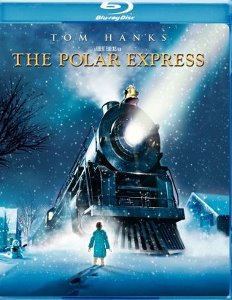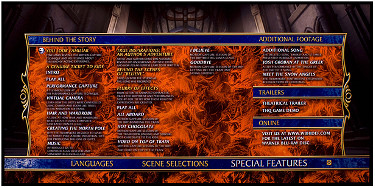The Polar Express
- BRD(Robert Zemeckis, 2004)
Studio: Warner Pictures (USA) / Warner Home Entertainment (USA)
Video:
Aspect ratio: 2.40:1
Feature film: 1080p
100 minutes
Supplements: SD (480i or 480p)
Audio:
English DD 5.1
Subtitles:
English, French and Spanish
Extras
• Smokey & Steamer song
• Elvis In Vegas: The Many Polar Faces of Tom Hanks
Documentary/Featurettes:
• True Inspirations: An Author's Adventure
• Believe: Josh Groban at the Greek Theatre
• Behind the Scenes of Believe
• Flurry of Effects Gallery
• Meet the Snow Angels: The Moviemakers' Christmas Memories
• Theatrical Trailer
25 chapters
Standard Blu-ray case: 1 disc
Release Date: November 9, 2007
The Polar Express ~ Comment
I think myself lucky that I continue to enjoy books and movies made originally for children. I read at least one children's book every couple of years. Most recently it was "Anne of Green Gables." A real page-turner I felt. Honest. I'm sure I don't see things quite the way a child does, and certainly not a young girl; but I appreciate the opportunity to climb into a world I wouldn't have a clue about if it weren't for the likes of "The Secret Garden," "The Wind in the Willows" and "Treasure Island."
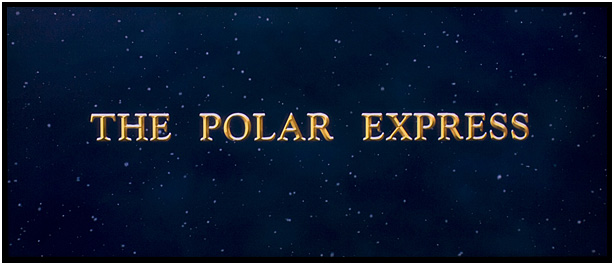 |
The 2004 movie by the certifiably young at heart Robert Zemeckis (Who Framed Roger Rabbit?, Back to the Future, Forrest Gump) is based on what is on its way to becoming a children's classic, written only twenty years ago. The author, Chris Van Allsburg, just happens to be the film's executive producer, and since he also provided the original drawings for the book, we have some confidence that what we see on the screen has authoritative approval. The book - if we can so call a 30-page series of nearly full page pastel illustrations with a one or two line narrative per - is written for children almost too young to appreciate the movie version, whose tone is considerably darker and more ominous.
But before getting to my more-exhaustive-analysis-than-usual of the story and its message (which I have insinuated into the "Movie" section below) , we should have a look at the visuals, which of course is what will attract anyone over the age of 5 to see this film. Overall, the artistic vision cannot be faulted. The illustrations that tell the story are riveting, beautiful, awesome. They are more explicit, fleshed out versions of what we see in the book, but otherwise nearly identical; and, of course they portray adventures not even hinted at in the original. The snow, the light, the color scheme are magical. The train, which first appears out of a mist of fog and smoke, has enormous weight, even if the roller coaster effect that was attempted fails to deliver that expected "weeeeee" factor. (Not even the kids in my audience gave out with exclamations of fearsome delight when the train went plummeting down the "steepest grade in the world.") It looked great, but lacked the 3-D effect that would have nailed it. The world of brilliant colors at journey's end is a delight and a half.
When I first saw the trailer for Polar Express months before the film's theatrical release I was quite impressed with the CGI, particularly how the faces and eyes were rendered; but an extended experience was less satisfying, its defects distracting. There were little things: like how clumps of flying snow looked like those bits of exploded dirt in action thrillers, only whiter. More disturbing is that the heads of some of the children appear to exist in a different reality from the rest of their bodies. But the most glaring problem is the eyes. Three of the major characters, all children - and to some extent, everyone - suffers from incorrect stereoscopic vision. Most of the time, their focus is so distant or off-axis as to give the impression that they are blind, especially weird when we see them in profile; nor is it helped by frequently tilting back their heads, as if sniffing, like the reptiles of Jurassic Park. The effect is eerie – and not in a good way, certainly not in keeping with the mood or art work of the book.
Tom Hanks gives a tour de force performance in several roles, deserving to have his name above the title, even if he is one of the executive producers. The character of the tramp seems to have been written in just for him, and he does it well. The only problem is that I have no idea what audience the tramp is playing to. He is, by turns, sinister and consoling. Maybe I've been too long not a child, but I don't see how anyone under the age of ten is going to feel happy with him on the train. By and large, the rest of the vocal cast are fine, too, especially Edie Deezen as Know-It-All. He's the kid we love to be annoyed with, just as he annoys us with irrelevant factoids. While I'm on the subject of the kids, I should give special mention to "Lonely Boy." He had an unfinished, vague look about him that got clearer as he himself became more confident.
The Polar Express ~ The Score Card
The Movie : 5
Every Christmas Eve, a young boy tries to stay awake to hear the bells of Santa's sleigh coming to deliver his Christmas presents, but he always falls asleep during the event, only to awaken with the presents already under the tree. (Didn't we all!) This year, when it is probably his last opportunity before he is too old to believe in Santa, he awakes, not to see and hear the sleigh arrive, but to be invited on an exciting train ride to the North Pole to meet Santa Claus himself.
Unlike other children who might have their own version of the "dream" where their wish for this or that present is realized in the morning, our hero boy's dream is about believing. All during the train ride, he doubts his own senses. He wants to believe, but can't quite make the leap, despite having a number of vivid, thrilling adventures on the train.
The metaphor for his conversion to the faithful is the bell from Santa's sleigh, which he hears at last and that Santa gives him as a present. Of course, the boy loses the bell before he awakens to the evidence confirming that it had all been a dream . . . that is, until he finds an unexpected gift under the tree: the errant bell with a note from Santa. He and his younger sister hear the bell, but his parents do not; and so the movie closes with the voiceover of the boy (who had been telling the story from his vantage as an adult) saying that while others grow up no longer able to hear the bell, he still does, as can anyone who still believes.
It's all so warm and fuzzy, I feel a bit grinchy for asking a question, probably not asked by your typical six or seven year old: Believes what, and to what purpose? If, in the story's waking reality (that is, the part of the story that takes place before and after the journey on the Polar Express), the bell is retrieved and returned by Santa, what is there not to believe? This is like having a religious vision or a sensation that you've been kidnapped by aliens and, upon returning to your former physical plane, you retain evidence that cannot be explained away, like being able to speak in Aramaic or possessing a metal not found on this planet. What would be not to believe? It's harder to believe, and it's more meaningful, if you return with little more than your memory of the adventure and what you make of it.
This is the fundamental difference between The Polar Express and other Christmas-time stories like Frank Capra's It's a Wonderful Life, Dickens' A Christmas Carol, or Miracle on 34th Street whose sentiment is: "Faith is believing when common sense tells you not to." In these stories, the protagonists experience a conversion in an altered state, but carry back with them not the thing itself, but an awareness of its meaning. Perhaps this is merely the difference between an "adult" drama and a childish one, but I think it can't be explained away so easily.
George Bailey, with the help of his guardian angel, is permitted to see the difference his having lived has made in the lives of others, something we in the audience hardly needed to be convinced of even though we believe in the depth of his doubt and despair. Ebenezer Scrooge sees the implications of his miserly life telescoped into a single night, a night during which he no longer has the usual comforts of his miserable work to distract from the truth. George and Ebenezer return from their magical experiences only with the memory of an intense gaze – there are no relics – and yet they are changed for all time.
Susan in Miracle on 34th Street is about the same age as the boy in The Polar Express. She has understanding enough to question, doubt, and comprehend – in her terms. Not satisfied with Kris Kringle's having brought about the miracle of Macy and Gimble shaking hands, offering to ditch their usual commercialism, we get the clincher at the end of the movie: When Susan, her mother and Mr. Gailey come upon the house she had asked for from Kris, we realize that the house was not given to her or to them by Kris. Rather we see that by showing them the house (which they will have to find a way to purchase – and without Macy's employee discount), Kris provides the opportunity for them to create a home and a family, a chance to reinstate hope and faith in the intended goodness of people, which Susan's mother had lost through her divorce. For the time being, Susan sees the house as a gift directly from the "real Santa Claus," but she will grow up to appreciate that Kris himself was a special gift that she permitted herself to open. This understanding will take her from childhood to maturity, yet she still can make the leap without sacrificing the magic of that childhood moment.
In The Polar Express, the bell ceases to be a metaphor once it intrudes itself into waking reality, as opposed to the dream reality. There is no conversion, no understanding, no growth – only belief in the obvious. The evidence and the belief are one and the same, which, you might argue, is age appropriate. However, the existence of the bell keeps our narrator thinking and believing as a child forever. After all – and this is the crux of the matter: it is the adult who is telling the story, not the child. This is why the three films I mentioned can and will be revisited for the sake of confirming our faith in possibility - in the Christmas spirit, if you will – and The Polar Express cannot. Since one of my standards for classical excellence is repeatability, I expect that The Polar Express will fail the test. We shall see.
Image : 7.5 (7/8)
The score of 7.5 indicates a relative level of excellence compared to other Blu-ray DVDs. The score in parentheses represents: first, a value for the image in absolute terms; and, second, how that image compares to what I believe is the current best we can expect in the theatre. To put this Blu-ray disc into the great scheme of things, it is a little less good than the SD edition of Toy Story.
What was most striking about this image was how soft it was as compared to my memory of what I saw in the theatre, nor did I feel could be explained by the amount of digital processing it must have gone through originally. Checking the bit rate, I was astonished to find rates of less than 10 from time to time! Under 15 was commonplace. While that is not conclusive evidence of the problem, it suggests a certain attitude about the production.
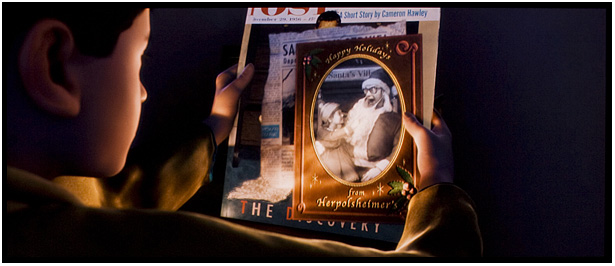 |
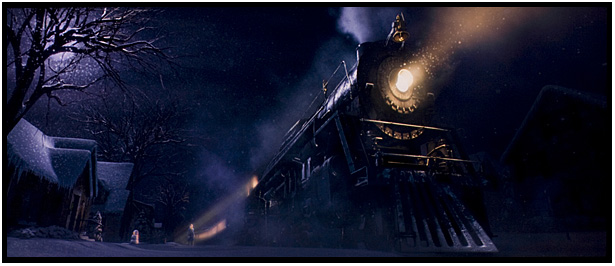 |
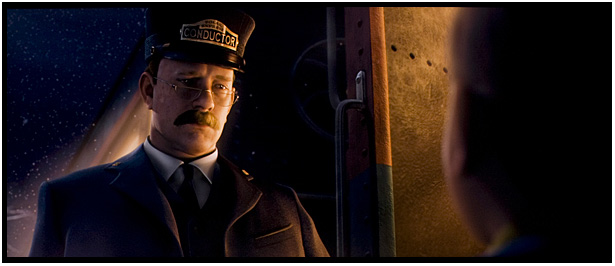 |
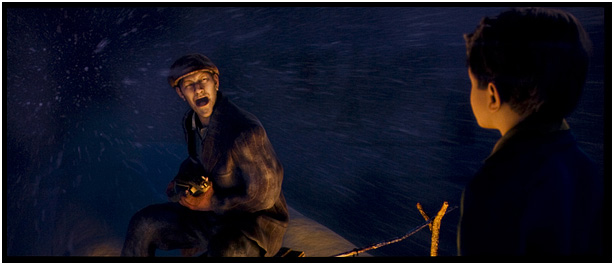 |
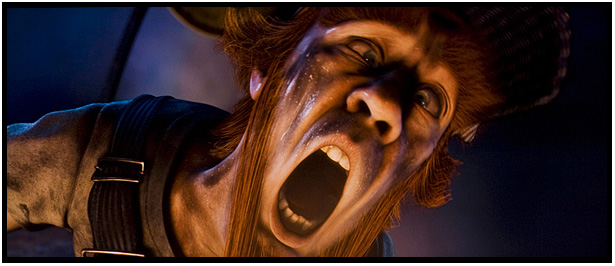 |
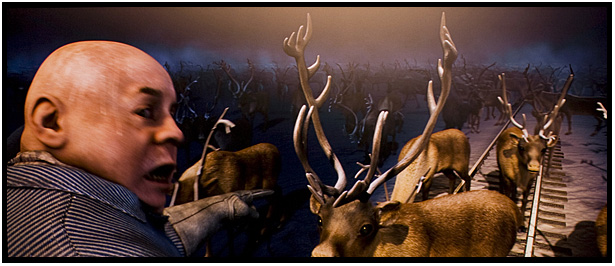 |
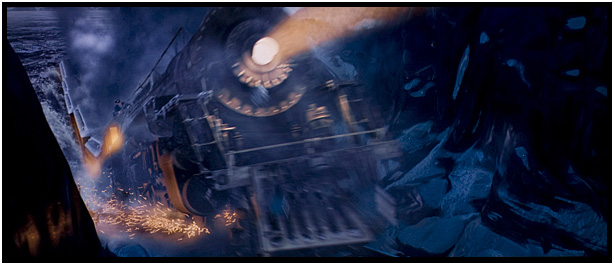 |
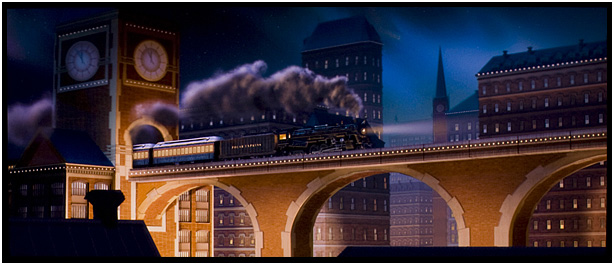 |
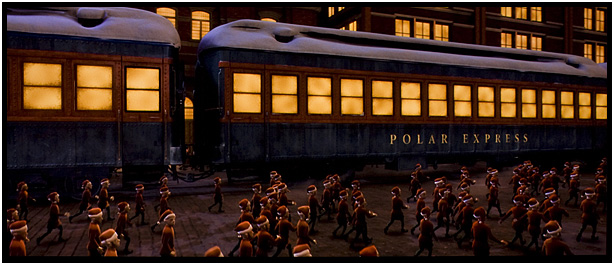 |
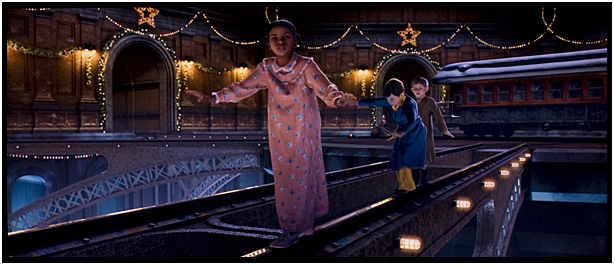 |
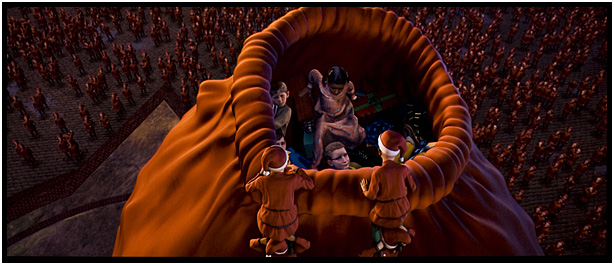 |
Audio & Music : 8/7
While the image quality of this disc is suspect, the audio fares better, but not enormously so. In fact I'm rather happy that there is no great disparity between image and sound. Of course, all the big set pieces are quite thrilling what with massive train sounds and children whizzing about in polarland.
Operations : 7
Typical of Warner, nothing exciting in the menu functions, but it sure is a breeze to use.
Extras : 8
Lots of extras that tell more about the production than you could possibly want to know: all the news that fits, it prints. Methinks it might protest too much.
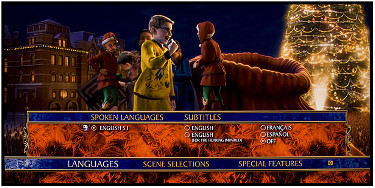 |
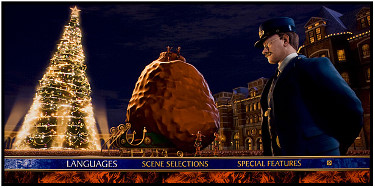 |
|
|
|
Recommendation: 6
Roger Ebert must still be eating his liver that Polar Express wasn't even nominated in the Best Animated Film category. For fans of the movie, and on anything less than an 70 inch display, I imagine you'll be satisfied with this transfer, even though I can't say I was.
Leonard Norwitz
LensViews
November 9th, 2007
COMING SOON:
Enter the Dragon
